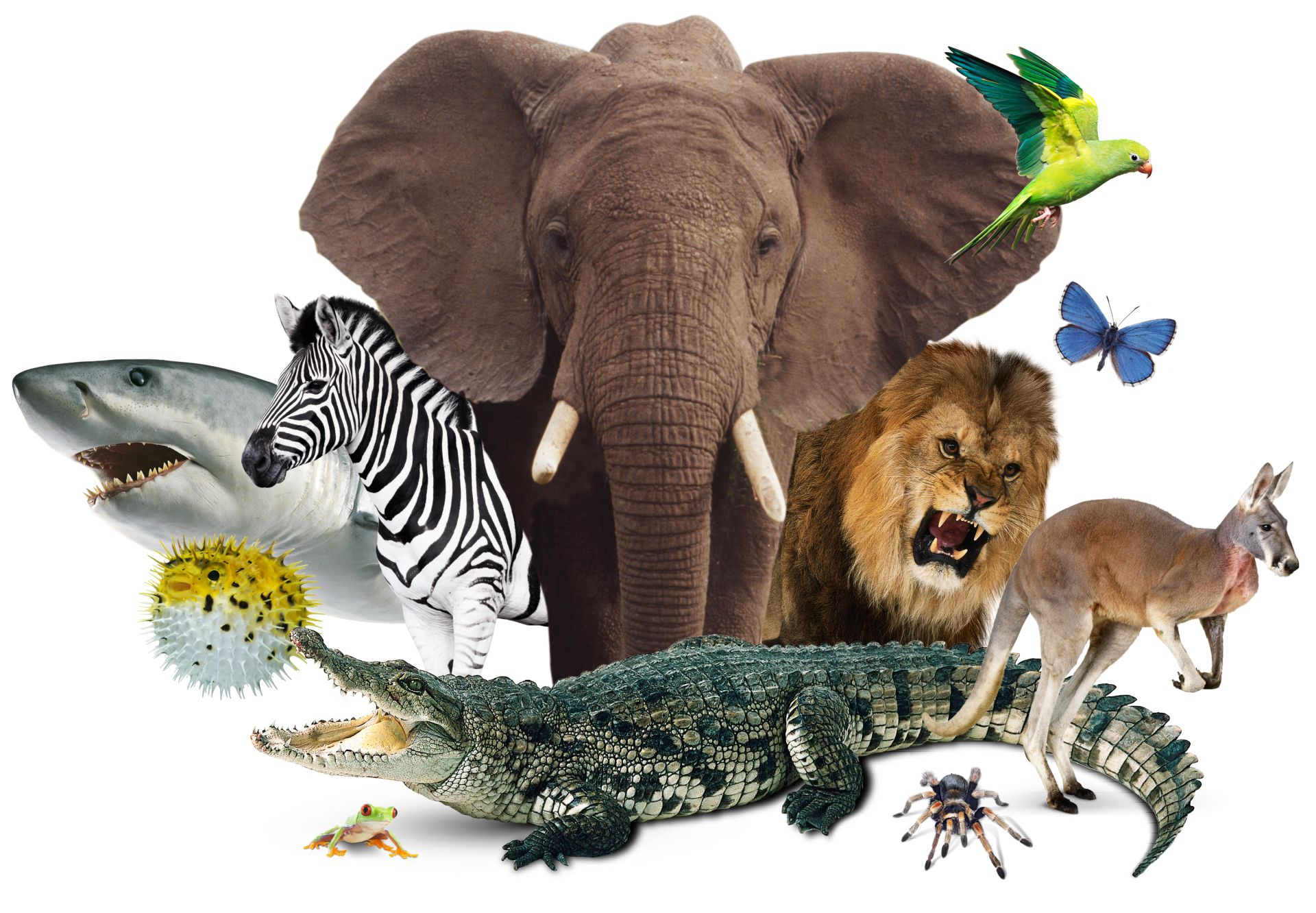This group involves all the living as well as extinct living species. As there are millions of species available, the classification of them is very important. Besides, it helps in assigning a systematic position to newly discovered species. In spite of differences in form and structure of various animals’ species, there are elemental features common to various individuals in relation to the arrangement of cells, nature of coelom, body symmetry, circulatory, patterns of digestive, or reproductive systems.
Animals can be categorised into two types on the basis of their symmetry.
Radial symmetry: In this category the body divides the organism into two identical halves when any plane passing through the central axis.
Bilateral symmetry: In this category where the body can be divided into identical left and right halves in only one plane. Animals such as arthropods, annelids demonstrate bilateral symmetry.
Animalia can be broadly classified into two types
- Cellular level: Porifera
- Tissue/Organ/ Organ system
Tissue/Organ/ Organ system can be classified into two types
- Radial
- Bilateral
Bilateral can be classified into three types
- Without body cavity (acoelomates)
- With false coelom (pseudocoelomates)
- With true coelom (coelomates)
With true coelom (coelomates) can be further classified as
- Annelida
- Arthropoda
- Mollusca
- Echinodermata
- Hemichordata
- Chordata
Here are some important points of Phylum
Phylum- Porifera: The organisms of this phylum are generally known as sponges. They are usually marine and typically asymmetrical animals. They show cellular level of organisation and are primitive multicellular animals.
Phylum – Coelenterata (Cnidaria): They are radially symmetrical animals. Basically, they are aquatic (mostly marine), sessile or free-swimming animals. The name cnidaria is derived from the cnidocytes or cnidoblasts. Cnidoblasts are utilized for defense, anchorage, and for the capture of prey. Cnidarians are diploblastic and demonstrate tissue level of organisation.
Phylum – Ctenophora: Ctenophores are radially symmetrical which are commonly known as comb jellies or sea walnuts. They are exclusively marine, diploblastic organisms with tissue level of organisation.
Phylum – Platyhelminthes
They are commonly called as flatworms as they have dorso-ventrally flattened body. These are mostly endoparasites found in animals including human beings. Flatworms are triploblastic, bilaterally symmetrical, and acoelomate animals with organ level of organisation. Suckers and hooks are present in the parasitic forms. Some of them extract nutrients from the host via their body surface.
Phylum – Aschelminthes
They are known as roundworms as the body of the aschelminthes is circular in cross-section. They may be freeliving, terrestrial and aquatic or animals and parasitic in plants. The body organisation Roundworms is of organ-system level. They are triploblastic bilaterally symmetrical, and pseudocoelomate animals.
Phylum – Annelida
They may be terrestrial or aquatic (fresh water and marine); free-living, and sometimes parasitic. The body organisation is of organ-system level and bilateral symmetry. They are metamerically segmented, triploblastic, and coelomate animals.
Phylum – Arthropoda
Arthropoda is the largest phylum of Animalia. Insects are belonging to this phylum. Over two-thirds of all named species on earth are arthropods. They exhibit organ-system level of organisation and bilaterally symmetrical. They are segmented, triploblastic, and coelomate animals. Chitinous exoskeleton cover the body of arthropods. The body consists of head, abdomen, and thorax. They have jointed appendages (poda-appendages, arthros-joint). They have respiratory organs are book gills, gills, tracheal system or book lungs.
Phylum – Mollusca
Mollusca is the second largest animal phylum after arthropoda. Molluscs are aquatic (marine or fresh water) or terrestrial animals. They exhibit an organ-system level of organisation. They are triploblastic, bilaterally symmetrical, and coelomate animals. Calcareous shell usually covers their body. They are unsegmented with muscular foot, a distinct head, and visceral hump. A spongy and soft layer of skin forms a mantle over the visceral hump.
Phylum – Echinodermata
They are known as Echinodermata as these animals have an endoskeleton of calcareous ossicles. The animal belonging to this group are marine with organ-system level of organisation. The larvae of this phylum are bilaterally symmetrical but adult echinoderms are radially symmetrical. They are coelomate and triploblastic animals.
Phylum – Hemichordata
This phylum includes a small group of worm-like marine animals which are usually organ-system level of organisation. In general, they are triploblastic, bilaterally symmetrical, and coelomate animals.
Phylum – Chordata
Animals of the phylum Chordata are basically characterised by the presence of a a dorsal hollow nerve cord, notochord, and paired pharyngeal gill slits.
I hope above the information are helpful for you. Keep learning.








:max_bytes(150000):strip_icc()/GettyImages-1394348691-fb6ac3222111498bb8c399ece71b9dfa.jpg)